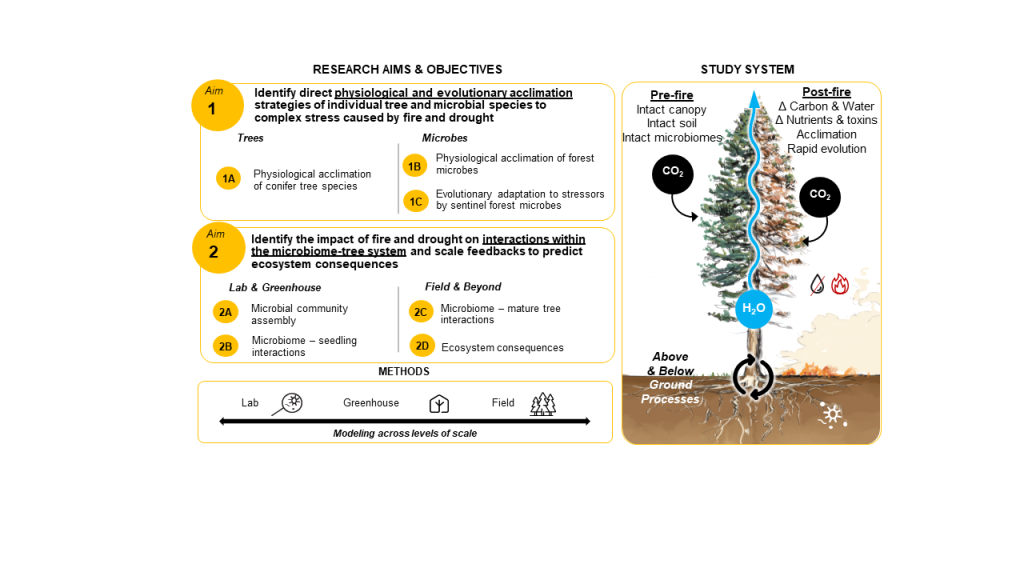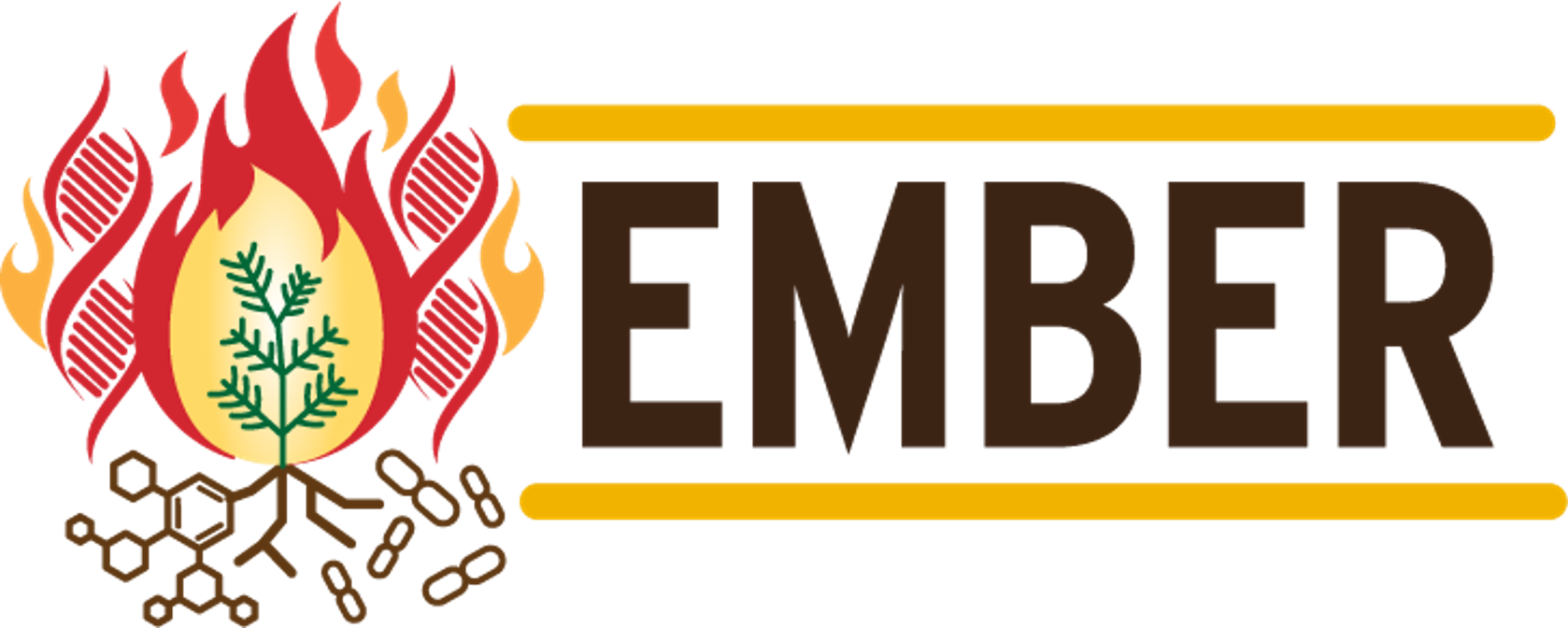Embedding Molecular Biology in Ecosystem Research
Unveiling the Interplay of Trees and Microbes for Forest Resilience Amidst Fire and Drought.

What is EMBER
Forests in the western United States are facing more frequent and severe fires and droughts. These problems are changing how trees grow and how tiny organisms in the soil live. Scientists know that fire and drought affect how trees take in carbon, use water, and distribute nutrients. They also know these events change how microbes in the soil function. However, we don’t fully understand how trees and microbes work together to deal with these stresses. The EMBER Institute wants to study this by looking at how things work at a very small scale (like inside cells) all the way up to how entire forests function.
The EMBER team plans to do experiments in a forest in Idaho. They’ll study two types of pine trees that are common in western forests and three types of microbes found in the soil. By studying these organisms closely, they hope to figure out how forests might survive future fires and droughts. They also want to create computer models that can predict how much carbon a forest can store under different conditions. This research is important because it will help us understand how to better protect our forests and manage them in a changing climate.
